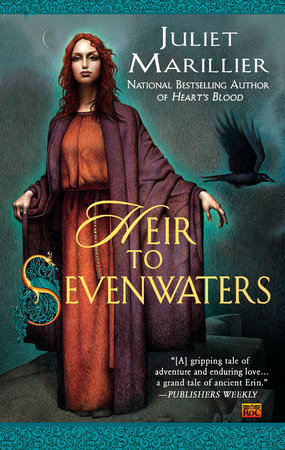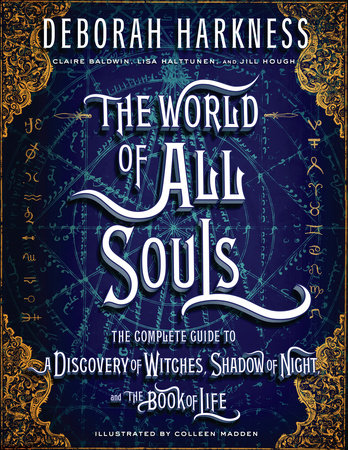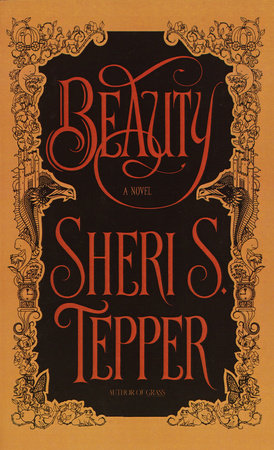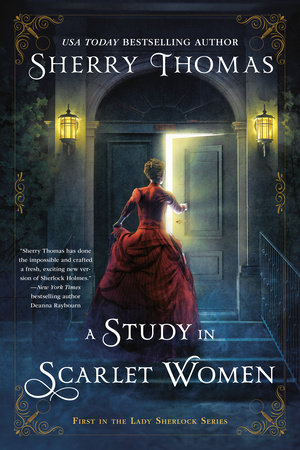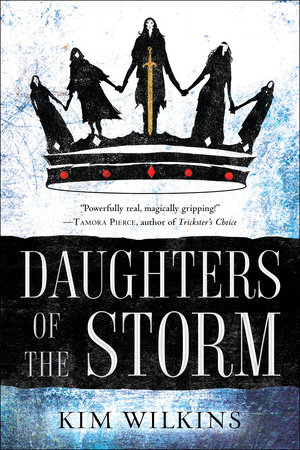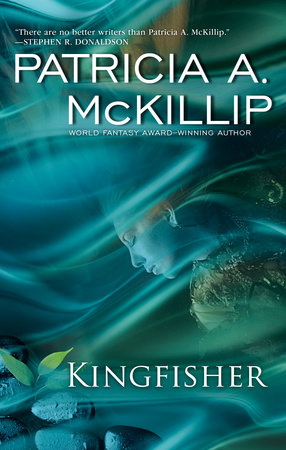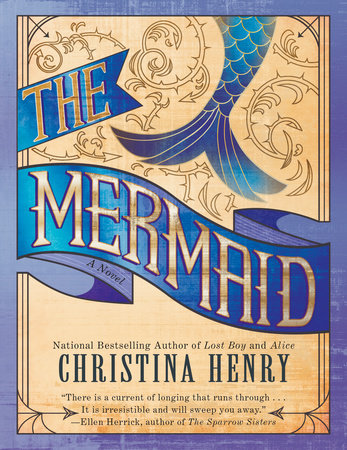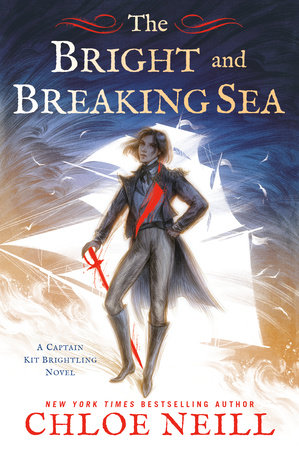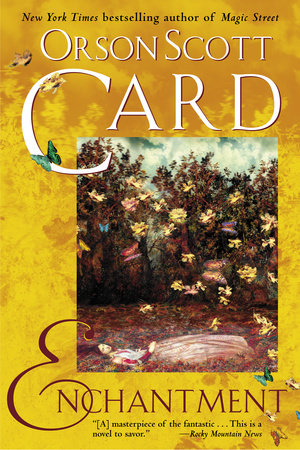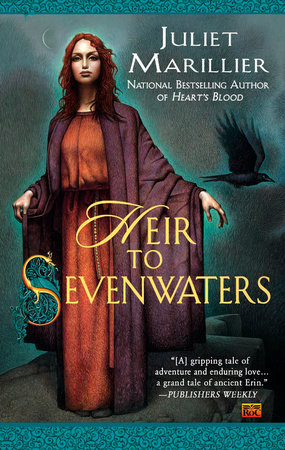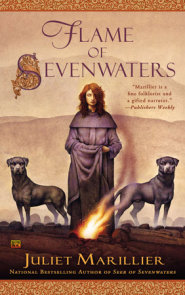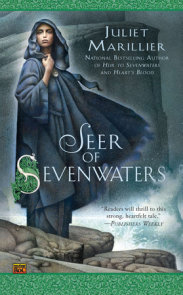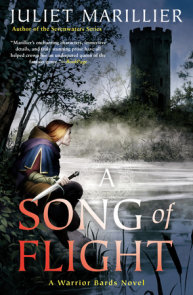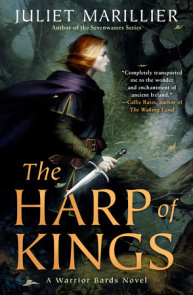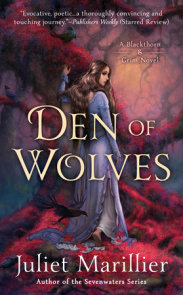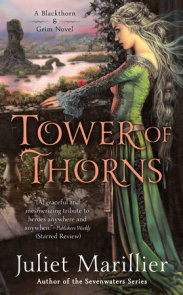Author Q&A
Your most recent book, Heir to Sevenwaters, takes place in the world of Sevenwaters. The last novel in this universe was published in 2001—what was it like to return to those characters after such a long time?
I expected it to be difficult, because my writing style has changed and developed a lot since I wrote those earlier books. But in fact I slipped right back into it with no trouble, picking up the action a few years after the events of Child of the Prophecy. I did have to make a decision to leave out some of best-loved ‘old’ characters such as Bran and Liadan, who would have stolen the limelight from the new characters.
Heir to Sevenwaters is a fully stand-alone novel rather than the extension of a trilogy. While I did need to remember the story and characters of the earlier Sevenwaters books, my protagonists are either completely new characters, or characters who had very small roles in the earlier books. The main challenge was to write a book that would satisfy both the readers who already knew and loved the “Sevenwaters Trilogy”, and those who had not read those earlier books. I had to let the old reader know what had happened to their favorite characters, while not including so much information about the past that the new reader got bored. Ideally, the new readers will enjoy Heir to Sevenwaters so much that they’ll go back to the earlier books.
Many of your books seem influenced by fairytales and folklore. How have those stories inspired your writing and style?
I’ve loved fairytales, folklore and mythology since I was a small child, and I think it was inevitable that they would influence my style and my development of stories. This kind of story grew up as a way of explaining life’s challenges, a sort of code for dealing with the unknown, the dark thing that lurked beyond the safe light of the campfire. I love the way traditional stories get right to the heart of matters and are unafraid to show big themes: love, loyalty, courage, faith, honour. In some of my novels, such as Daughter of the Forest, I use a fairytale as the framework of the story, but more usually I work the themes and motifs of traditional storytelling into my novels as I go (in fact, it’s not as conscious a process as that—often they just appear!) I have a strong awareness of the magical quality of the natural world, so that tends to show in my writing very strongly.
Your books are noted for the fact that despite their fantastical elements, the characters and motivations are very realistic. Is it ever tempting to overcome a plot hurdle by throwing in a deux ex machina (The wizard fixed it! Magic solves the day!)? What do you focus on to keep your characters relatable?
My primary focus is always on the characters and their relationships. The ‘world’ of the book is secondary, though of course it has to be interesting and internally consistent. The fact that the world of my books is the real world, though in a slightly fantastic version, makes it easier to keep things realistic. When I’m following a character I’m always thinking about his psychology, his parentage and upbringing, and how those would influence his decisions.
Many of your sequels have been noted for the fact that they can also stand-alone; readers don’t have to have read the first to be able to become engrossed in its sequel. What do you think the most important factor is for making sequels accessible in this way?
My advice to aspiring writers of fantasy trilogies or series is that each book needs two main plots. There’s the ‘big story’, the over-arching grand plot of the entire series, and there is the complete-in-itself, one-book plot. Provided each novel has its own satisfying beginning, middle and end, it should work as a stand-alone as well as fitting into a series. For me it’s generally the personal story, usually dealing with relationships between characters, that provides the one-book plot, and the historical/political story that stretches over a whole series.
Do you prefer writing in the first person or the third person? Why?
I prefer whichever suits a particular story. First person allows deeper insight into the protagonist’s character. It allows the reader to identify more fully with the protagonist and to share her world quite intimately. So it suits a story focused on one character’s personal journey. However, first person shuts out insights into other characters. It does not allow male and female psychology to be explored alongside each other, and it limits the mode of storytelling quite considerably. For instance, within the historical framework of my stories, I can’t plausibly place a young female narrator in the middle of a battle or any other scene that would have been exclusively male in that time and culture. My books are as much historical novels as fantasies and they’re set in real history.
So, for books where I want to include battles, voyages, and an insight into the masculine world of, say, Viking warriors or Pictish assassins, I use third person. Third person allows a deeper exploration of the relationships between characters. We can see their misunderstandings and hear what they think about each other. We can create a more complex structure with various story threads running parallel. I find that kind of writing more challenging and more rewarding, but I find a first person narrative easier to write.
Please tell us about your writing process. For example, do you research? Do you conceive of stories as you write them, or plot them out beforehand? Do you revise as you write, or afterwards? Does the process change from book to book?
I’m a control freak writer, a super-planner who can’t imagine starting a book without knowing the ending. Once I conceive the idea for a new novel, I do masses of research, not just history, but the mythology of the time and culture, plant and animal lore, geography, language, clothing, weaponry and so on. My books are set in the real world, not an invented secondary world—their fantasy element lies in the interaction of the human characters with the Otherworld, which takes whatever form fits the common beliefs of their time and culture.
After the preliminary research, I draft a couple of outlines, then a synopsis, which my publisher sees and (hopefully) approves. After that I write a detailed chapter plan. Then I get started on the book. The process is a bit like this:
- Write Chapters 1-3
- Revise Chapters 1-3 and tweak the plan
- Write Chapters 4-6
- Revise Chapters 4-6 and tweak the plan
And so on to the end, so the earlier chapters get extensive revision before I actually write the last chapter. And plans are made to be altered, of course—characters go their own ways, brilliant ideas occur mid-novel, and what seemed brilliant at the planning stage often turns out to be rubbish. The plan certainly isn’t set in stone. When I get to the end, I put the manuscript aside for about a month and then come back to it with fresh eyes for more revision. I use the same process for every book.
If you weren’t a writer, what would your dream job be?
I’d run a small, specialized bookshop / coffee shop in a country town. And I’d provide a home for abandoned dogs.
You write for both young adults and adult readers. How do you make the switch between the two? When you start a story, do you have in mind whether it will be best for young adults or adult audiences, or does that develop as the book does?
I always know in advance whether a story is primarily for adults or young adults, but I’m aware that there is a lot of cross-over for my books. My existing adult readership enjoyed Wildwood Dancing and Cybele’s Secret, and my adult novels have a keen following amongst high school and college students. I wrote Wildwood Dancing after I had seven adult novels in print. The main differences I found in writing for a younger readership were that the book has to be shorter, that it needs to be strongly focused on the protagonist’s journey to maturity, and that we should see the main character learn something during the course of the story. In fact my Australian publisher said, ‘Write something just like your adult books, only shorter.’ Making the switch is not difficult for me. I generally work on only one project at a time, and I think that helps.
You didn’t publish your first novel until later in life—what made you write for publication at that specific time?
My personal situation meant I didn’t have the emotional energy for creative work until that point, although I had done a lot of writing when I was a student. I had to wait until the circumstances were right, and it was a long wait. But during those years of not writing, I was learning about human behavior and relationships, which gave more depth to the books I eventually wrote.
In fact I didn’t write my first book, Daughter of the Forest, with publication in mind, but for personal therapy, and the process was very much part time. Once it was finished I decided maybe I’d try sending it to a publisher, and things took off from there.
Do you have a favorite novel, or a favorite character, from all those you’ve written?
My favorite novel tends to be whichever one I’m currently writing. As for characters, I do have a soft spot for Faolan, the complicated assassin/spy from Blade of Fortriu and The Well of Shades.
What’s your favorite book (or books)?
A book that has influenced me greatly is Women Who Run with the Wolves by Clarissa Pinkola Estes – a Jungian take on women’s role in traditional stories. I read it when I was at a very low ebb emotionally, and it really inspired me. My favorite series is The Lymond Chronicles by Dorothy Dunnett.
What advice do you have for people trying to break into writing?
Write the story that’s busting to get out, and don’t try too hard to second-guess the market. Make sure you have the tools of the trade. You need to be able to write grammatically correct English and understand the essentials of style. One of the easiest ways to acquire these skills is through reading, the broader the better, so don’t just read within your favorite genre. Join a writers’ group or critique group to exchange feedback – critiquing other writers’ work can give you new insights into your own.
Be prepared for setbacks and knock-backs. Keep working at your craft. Real writers write because they can’t not write. Getting published is a bonus. Even if you get published, chances are you won’t become rich and famous. Be realistic and enjoy writing for its own sake.
Which of your characters would you most like to be friends with?
Deord from Blade of Fortriu. I love those strong, silent warrior types.
What authors and books influenced you most as you started to write yourself?
I don’t read many books on the craft of writing, though I do belong to a critique group made up of four experienced writers. I think I learn most by reading great novels, those that combine writerly craft with good storytelling. I love Iain Banks’s novels, especially The Crow Road. David Mitchell’s Cloud Atlas is structurally bold while pulling the reader in with excellent storytelling. Another much-admired author is the Portuguese writer Jose Saramago. As you can probably see, I don’t read much fantasy.
Your stories often combine many various elements and genres—fantasy, historical, romance . . . is there any particular genre you would like to still try, other than these?
I never discount anything for the future, but right now I’m happy with what I’m doing —I don’t think I’ve finished exploring this kind of storytelling yet.
